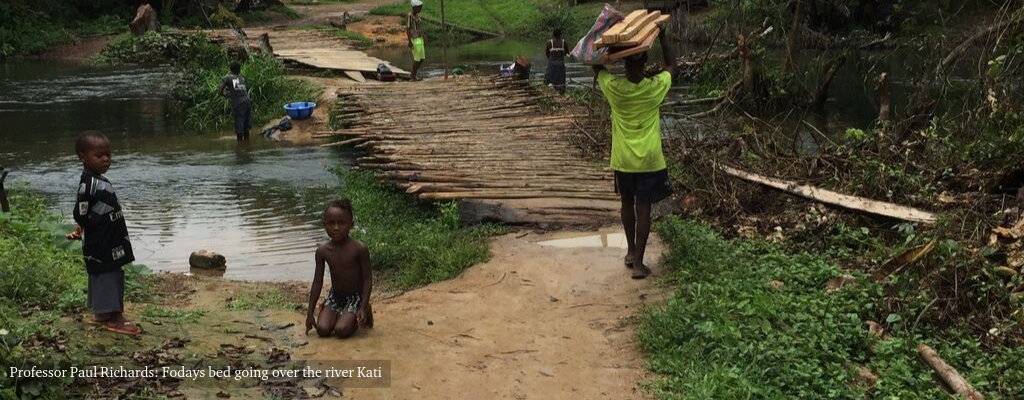The Pandemic Preparedness project has begun the fieldwork stage with some important developments in our work, starting with building key relationships in the community. This begins with the chiefs. Chiefs make up the bottom level of government in provincial Sierra Leone. Each chiefdom administration is led by a Paramount Chief, who presides over a council. Foday Kamara, one of our Sierra Leonean researchers, has been formally introduced to the Paramount Chief in our fieldwork site. This gave him the opportunity to explain the work of the Pandemic Preparedness project and introduce what the fieldwork will entail. The Paramount Chief then proposed to call a meeting with the sub-chiefs to introduce Foday and allow him to explain how he will be working.
This relationship between our researcher and the Paramount Chief is important because a prime responsibility of a paramount chief is to spot trouble, solve it where he or she can, or to call in help from higher authorities. This includes keeping an eye open for threatening events, such as hunger or disease. Sierra Leone was badly affected by an epidemic of Ebola Virus Disease in 2014–15. There were 8,000–13,000 cases, and over 4,000 people died.
In this instance, the Chief in the Pandemic Preparedness fieldwork site welcomed the project; he was pro-active in Ebola prevention in 2014-15, and remains keen to improve hygiene and infection control throughout his chiefdom. He has a new chiefdom sanitary supervisor, seconded from the Ministry of Health and Sanitation, and Foday will certainly make the work of the supervisor a point of early attention. The Chief has also set up a chiefdom-wide youth volunteer task force to keep an eye on hygiene and infection issues, and this gives Foday another useful reference group whom he will observe and with whom he will discuss. Foday next plans to introduce himself to the nurse in charge of the Primary Health Units. It is a Maternal and Child Health Post (MCHPs) but the nurse will at her discretion provide help to others.

In practical terms the Chief is also key to our project as he will facilitate the researchers introducing themselves to community members, has arranged a place for Foday to lodge, and has given advice on key essentials for living in the village. For example, the chief is getting estimates for the enlargement of his small solar installation (3 panels and two batteries) to support Foday’s computer and phones. Foday has now moved back to the fieldwork site in time for the meeting with the sub-chiefs. His bed and other items, such as a charcoal cooking pot, have been delivered, and he has begun his weekly observational routines. The rains are well begun, but the track is (as yet) in not too bad a state. We hope it will remain manageable for weekly supervision even in the worst of the rains, though at the moment the Kati river has flooded and it is unsafe to cross the wooden foot bridge into or out of the village.

The researchers also began to discuss the plans for the project later down the line and also had a useful discussion on stakeholder engagement. An inception meeting with village representatives from the administrative section of 12 villages within which Foday will work was well attended and useful suggestions and comments were forthcoming in the Q&A session. The researchers have now visited eight of these settlements and also mentioned the ambition to run a scenario-building exercise to involve a range of stakeholders within and without the chiefdom towards the end of the fieldwork period. These proposals were very well received and the researchers are looking forward to working with the Chiefs and villagers on this exciting project.
